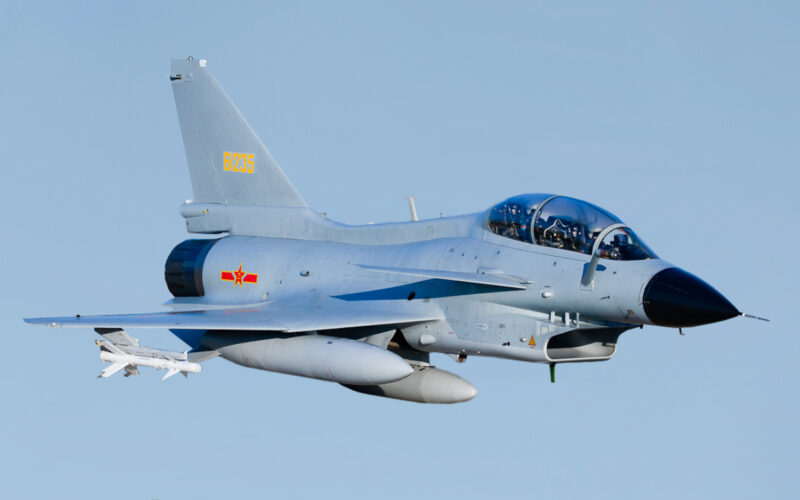The Canadian government has condemned the interception of one of its military planes by Chinese fighter jets over international waters on October 16, 2023, labeling the incident as “dangerous and reckless.”
A Lockheed CP-140 Aurora maritime patrol aircraft operated by the Royal Canadian Air Force was flying in international airspace above the East China Sea. Onboard the aircraft were several senior Canadian officers along with two news crews.
The flight was an operation aimed at enforcing United Nations Security Council (UNSC) sanctions against North Korea by monitoring transport vessels. Canada’s contribution to this coordinated multinational effort is known as Operation NEON. The Canadian frigate HMCS Vancouver and a CP-140 were deployed to Japan.
During the mission, China’s People’s Liberation Army Air Force (PLAAF) fighter jets intercepted the CP-140 several times. One of the fighters reportedly flew directly ahead of the maritime patrol aircraft and released flares in its path.
Footage released by journalists shows a Shenyang J-16 fighter, a Chinese take on the Russian Sukhoi Su-27, and a Chengdu J-10S twin-seat fighter armed with air-to-air missiles coming near the Aurora.
(Credit: Radio Canada)
“That last sequence was an unprofessional intercept,” Major-General Iain Huddleston, commander of 1 Canadian Air Division, directly commented to Radio Canada journalists onboard. “The proximity of the airplane to ours is not really the determining factor, we can fly in close formation with other airplanes. It’s when aircraft aggressively maneuver in close proximity of the others that there is a safety issue.”
Canadian Minister of National Defence Bill Blair expressed deep concern regarding the unprofessional and hazardous nature of the incident.
“The actions of the Chinese military in these circumstances were unacceptable and put our aircraft and their mission, at significant risk,” Blair said. “There are diplomatic processes that we engage in order to register our concern about the actions of the People’s Republic of China military plane in this instance. And those processes are well underway as of today.”
The Canadian Department of National Defence said no one onboard the CP-140 aircraft was harmed during the intercept.
“Canadian Armed Forces members undergo extensive training before these missions and are well-prepared to deal with events that may occur,” the department said in an emailed statement to AeroTime.
Chinese authorities also commented on the interaction, claiming that the mission of the Canadian aircraft was to “make provocations at China’s doorsteps.”
“The illegal intrusion of a Canadian CP-140 aircraft into the airspace of Chiwei Yu, an affiliated island of China’s Diaoyu Dao, […] seriously violates China’s sovereignty and threatens our national security,” Foreign Ministry Spokesperson Mao Ning said in a press conference. “UN Security Council resolutions have never mandated any country to deploy forces and conduct surveillance operations in the airspace or waters under other countries’ jurisdiction in the name of implementing the resolutions.”
Chiwei Yu is the Chinese name of the Japanese island of Taisho Jima, part of the Senkaku Islands (or Diaoyu in Chinese) in the East China Sea. This Japanese territory is claimed by both China and Taiwan.
Diplomatic standoff between Canada and China
This incident marks a significant escalation in the ongoing diplomatic row between Canada and China.
The two nations have been at odds over several issues, including the detention of two Canadians, Michael Spavor and Michael Kovrig, who were arrested by Chinese authorities in December 2018, shortly after Canada arrested Huawei executive Meng Wanzhou at the request of the United States. These three people have since been released, yet the arrests sparked a diplomatic crisis that has strained relations to this day.
A similar encounter between a J-16 fighter from the PLAAF and a US Air Force RC-135 observation aircraft unfolded on May 26, 2023. The US Indo-Pacific Command condemned an “unnecessarily aggressive maneuver” from the Chinese pilot after the fighter jet flew directly in front of the RC-135, forcing the US aircraft to fly through its wake turbulence.

